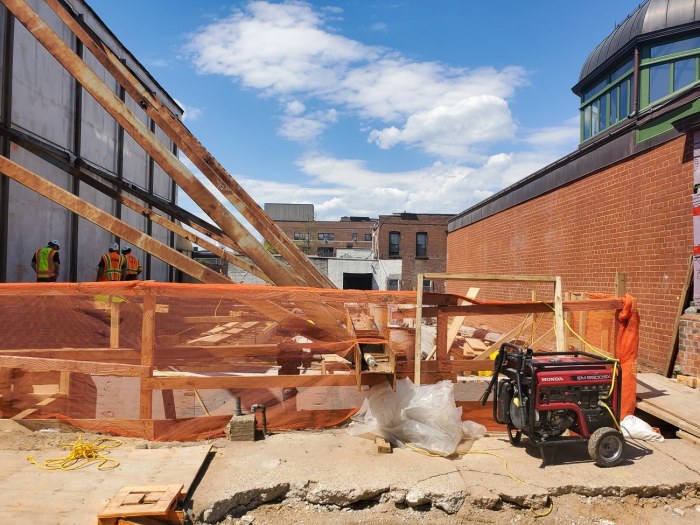BY JULIE MENIN | As unemployment numbers for New York City continue to hover at around 10 percent, it is time, as we commemorate the 11-year anniversary of Sept. 11, to look at what we have been able to achieve Downtown — and to take those lessons and actions and apply them across the city.
Eleven years ago, Lower Manhattan faced the loss of 65,000 jobs and more than 20,000 residents, in addition to suffering $31 billion in economic loss. Today, the area is the fourth largest commercial business district in the country, the fastest-growing residential neighborhood in the city. Indeed, Downtown’s employment increased by three percent between 2009 and 2010.
What has worked has been an active, interventionist government at the federal, state and city levels that has put dollars into sorely needed infrastructure projects. Whether it is school creation, the Fulton Center, the East River waterfront development, green residential buildings or the panoply of projects in Downtown, jobs are being created. These projects have generated jobs in both the construction industry and local services, such as retail and dining, that will have long-term dividends.
Our community led the charge for an investment in building three new public schools in the last four years, which has made Lower Manhattan families flock to the neighborhood, thereby boosting the residential population by 30,000 since 2001. Community Board 1 initiated the rezoning of Northern Tribeca several years ago to comprise inclusionary zoning, resulting in the creation of new affordable housing that helped increase the diversity and stability of the community.
To attract new businesses to Downtown, the Lower Manhattan Development Corporation — whose board I previously served on — provided grants to companies that committed to generate a minimum of 75 new jobs in the area and to employers committed to retain at least 200 area jobs. As a result, more than 300 new businesses moved Downtown since 2005.
The commitment to build new office space at the World Trade Center site has led to the leasing of one million square feet by Condé Nast. A plethora of media and creative service companies, such as the New York Daily News, B.M.I. and American Lawyer Media, have decided to call Lower Manhattan their home, making the area no longer dominated by the financial services sector. Now, Lower Manhattan has one of the lowest office vacancy rates among business districts in the nation.
Another key decision made Downtown was to invest in transportation infrastructure. The Fulton Center, in particular, will modernize and connect some of the outdated and crumbling subway lines and PATH train and include expanded retail space.
The combination of infrastructure development and retail expansion will significantly contribute to the ongoing revitalization of Lower Manhattan. The city must continue to invest in such large-scale infrastructure projects.
Now, there are certain things we need to do to finish the job Downtown. The opening last year of the National Sept. 11 Memorial will result in seven million visitors coming to Lower Manhattan annually. We should put in place marketing programs to ensure that the tourists shop in the neighboring stores, dine in the restaurants and visit neighboring communities including, Chinatown, Soho and the Village. The National Sept. 11 Museum should be completed, now that an agreement has been reached has been reached between the Port Authority of New York and New Jersey and the 9/11 Memorial Foundation.
To continue to attract new office tenants, retail and restaurants, we should build the W.T.C. Performing Arts Center. Half of the $200 million I found in unaccounted L.M.D.C. funds was allocated to this project. The arts are a proven driver of economic revitalization projects. The L.M.D.C. must disseminate the remaining funds it has to key job-creating infrastructure projects Downtown. Additionally, sunset plans should be put in place for agencies such as the L.M.D.C.
The eyes of the world are once again on Lower Manhattan, and now is the time to finish the job.
Julie Menin is the former chairperson of Community Board 1 in Lower Manhattan.

















